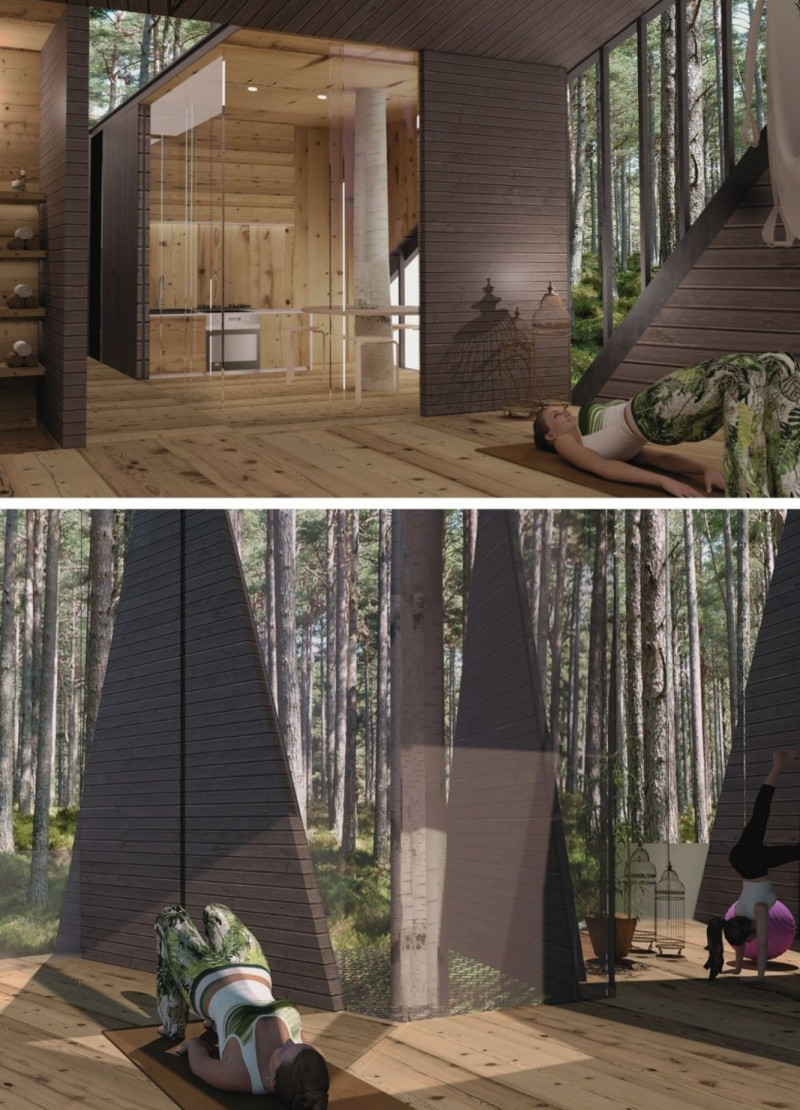5 key facts about this project
At its core, this project serves a dual purpose: it is not only a structural entity but also a facilitator of community interaction. The layout encourages gatherings and fosters social connections, reflecting a growing trend in architectural design that values communal space. The architectural plans carefully outline areas that promote interaction, including open courtyards and flexible spaces, enhancing the overall usability of the structure. As visitors approach the building, they are greeted by a facade that harmonizes with its surroundings, employing a material palette that reflects local traditions while integrating modern sensibilities.
The choice of materials plays a critical role in the overall ambiance of the project. Predominantly featuring materials such as reinforced concrete, glass, timber, and metal accents, the design not only emphasizes durability but also seeks to create warmth and welcome. The interplay of these materials gives depth to the structure, with large glass surfaces allowing natural light to permeate the interior spaces, reducing the need for artificial lighting during the day. The timber elements introduce a tactile quality that contrasts with the sleekness of the glass and metal, providing a sense of comfort and familiarity to those who use the building.
Unique design approaches are evident throughout the project, particularly in the incorporation of sustainable practices. The roof is designed to accommodate green spaces, not only adding to the aesthetic quality but also serving ecological functions, such as improving air quality and promoting biodiversity within urban settings. This thoughtful approach demonstrates a commitment to environmental responsibility, ensuring that the building contributes positively to its ecosystem.
Further, the design considers passive heating and cooling strategies, reducing energy consumption and enhancing user comfort. The orientation of windows and the strategic placement of overhangs are crucial components of the architecture, maximizing natural ventilation and facilitating cross-breezes that contribute to a comfortable indoor climate. Such innovations reflect a comprehensive understanding of both the climate challenges specific to the location and the design’s potential impacts.
As the project unfolds internally, attention to detail becomes increasingly apparent. The spatial organization promotes a flow that guides users intuitively through various functions. Common areas are positioned centrally, surrounded by smaller rooms designated for more private activities, creating a balance between openness and intimacy. This thoughtful arrangement exemplifies a contemporary approach to architecture that prioritizes user experience.
In summary, this architectural project is a commendable example of modern design, merging functionality with an acute awareness of environmental impact and social responsibility. Its careful integration of materials, space, and sustainable practices showcases a commitment not only to aesthetics but also to the well-being of its users and the broader community. Readers are encouraged to delve into the architectural plans, architectural sections, and architectural ideas to glean further insights into the nuances of this design and its significance in the realm of contemporary architecture. Exploring these elements will provide a deeper understanding of how this project embodies thoughtful design in practice.


























